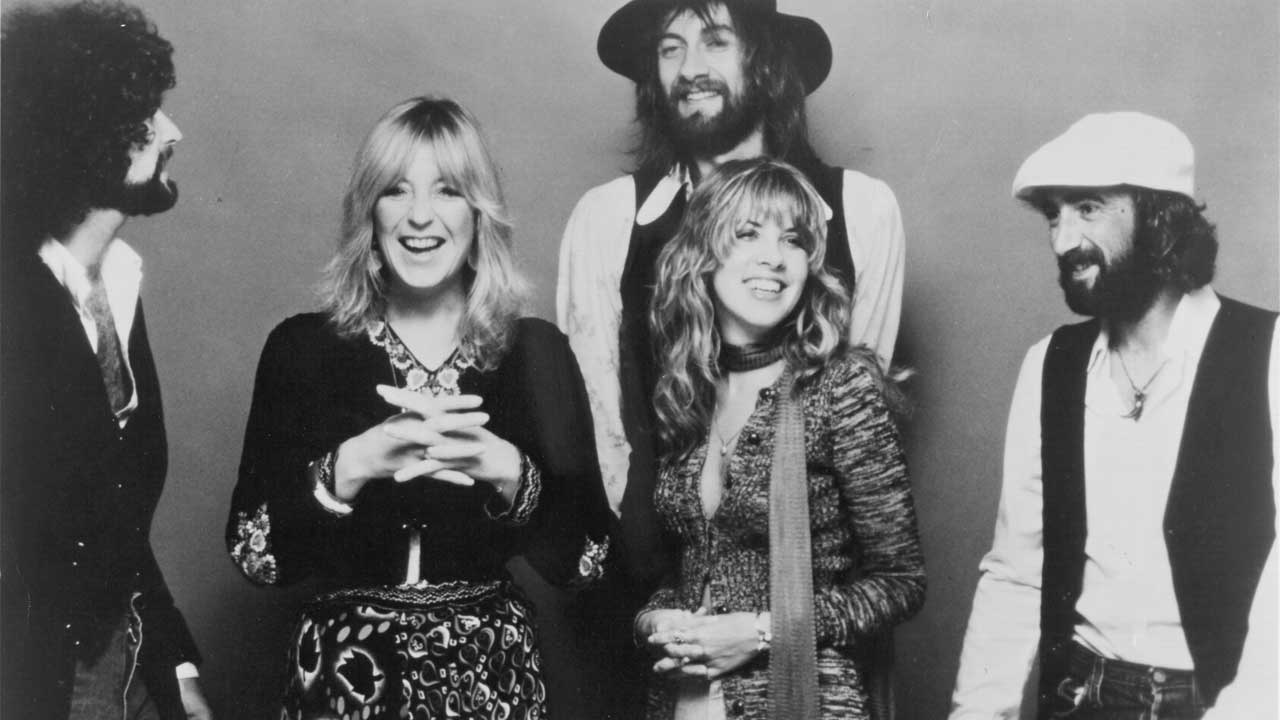
“I think anyone who creates will tell you that it’s very difficult to work completely linearly to get what you’re after,” Lindsey Buckingham has said of The Chain. The only song credited to all five members of Fleetwood Mac’s 1977 line-up, The Chain was assembled with disparate links and spare parts and a lot of arranging ingenuity. Recorded during a period of romantic break-ups and high tension within the band, it has come to represent the remarkable endurance of one of rock’s most volatile bands.
It began in 1976, during the sessions for the Rumours album. Christine McVie brought in a song-in-progress called Butter Cookie (Keep Me There). On the Super Deluxe Edition of that now classic album, you can hear the song evolve through early demos and instrumentals. A feathery, Van Morrison-like groove gives way to a swampier chug, as the band search for the right feel and Christine McVie experiments with words. But it never quite rises above what might have become a solid album track. Then in the last minute it suddenly roars to life, powered by the entrance of John McVie’s memorable low-end bass riff.
Drummer Mick Fleetwood called that thematic riff “a major contribution” He said: “The Chain basically came out of a jam. It was put together, as distinct from someone literally sitting down and writing a song. It was very much collectively a band composition.”
As producer, Buckingham cited two inspirations for the process of assembling the song. Brian Wilson and his classic Beach Boys track Good Vibrations was an obvious comparison. The other one was more surprising.
“[Film director] Alfred Hitchcock, I gather, worked in a similar way,” Buckingham told BAM in 1981. “He would totally preconceive every scene and then try to get it as close as he could to that. I do that too, in some ways. You hear something in your head and you try to get as close as you can. At the same time, the more you work with music – or art, for that matter – the more you learn that you have to let the work lead you to a certain extent. It has to be give and take, and there are always going to be a certain number of unknowns that you’ll have to deal with.”
Counting backwards from the entrance of McVie’s bass riff, the band first mapped out a new front section, measure by measure, with Fleetwood’s bass drum acting as metronome. Buckingham then imported a finger-picked riff from Lola (My Love), a song from 1973’s Buckingham-Nicks (the album that effectively got him and Stevie Nicks hired to join Fleetwood Mac in the first place). That riff bounced perfectly against the four-on-the-floor pulse, clearing an open space for the striking three-part harmony vocals – ‘Listen to the wind blow…’
But it really only became a song when Stevie wrote some words,” Fleetwood said. “Lindsey arranged and made a song out of all the bits and pieces that we were putting down onto tape. And then once it was arranged and we knew what we were doing, we went in and recorded it. But it ultimately becomes a band thing anyway, because we all have so much of our own individual style, our own stamp that makes the sound of Fleetwood Mac.”
Of course, because this is Fleetwood Mac we’re talking about, there is a conflicting account of the song’s construction. In a 2020 interview with Variety, Nicks said it wasn’t just “some words” that she brought to the table, but a completed song. “Lindsey asked me: ‘You know that song that you wrote about ‘If you don’t love me now, you will never love me again’? Can we have that?’ Because we have this amazing solo that’s at the end of it, when John comes in with the bass line. But we don’t really have a song. Would you consider letting us have that song?’”
Nicks continued: “And I thought, wow, I had full-on plans for the original song before I gave it to Fleetwood Mac. But I thought: ‘Well, okay, I will take one for the team here, and I will give you the song. I mean, I’m really glad that I gave it to them, because it turned into one of our best songs. But it was holding its own before they recorded it.”
Nicks also considered it to be a valuable songwriting lesson: “It’s a good way to see where songwriters go, you know, and how they can have something that’s really pretty on its way to being complete, and then something else comes along and they need part of it.”
While the original recording of The Chain wasn’t a hit, 20 years later a live version from The Dance made it to No.30. Meanwhile, the track attained a separate kind of fame in the UK when the bass riff-led end section was used by BBC television as the theme for their Formula 1 racing program (it was used from 1978- 1996, then again from 2009-2015). In 2017 The Chain was featured in the popular Marvel film Guardians Of The Galaxy Vol. 2. It has also appeared in HBO shows Family Bonds and Our Flag Means Death.
On Fleetwood Mac’s 2019 world tour, with Neil Finn and Mike Campbell in the band in place of Buckingham, they opened every show with The Chain. It only accentuated the missing link (‘Never break the chain’) of Buckingham’s unexpected dismissal from the band.
While there had been some lingering hope that the original chain would be restored for one last Fleetwood Mac tour, Christine McVie’s death in 2022 put an end to that. But the song remains to remind us, as McVie said in 1977, that “there is a heavy connection with the band and The Chain”.
As Stevie Nicks said: “If you’re in a band, you’re part of a team.”




!["[T]he First and Fifth Amendments Require ICE to Provide Information About the Whereabouts of a Detained Person"](https://images.inkl.com/s3/publisher/cover/212/reason-cover.png?w=600)


